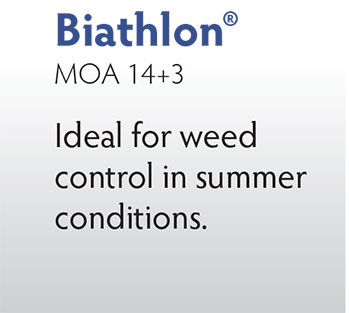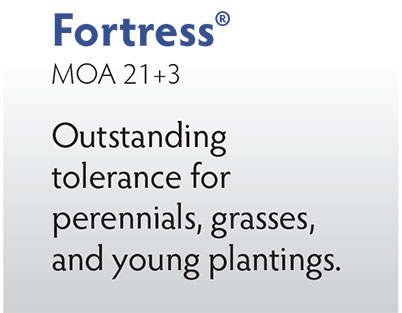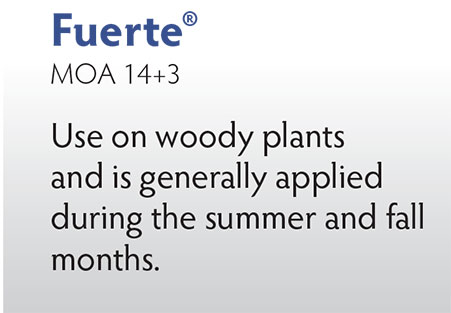Dan Stahl to retire as VP/GM of OHP Inc.
April 14, 2021
NEWPORT BEACH, Calif. | April 13, 2021—Dan Stahl, a leader in the crop protection industry who most recently guided and developed OHP Inc.’s position as a leading provider of innovative product solutions for the greenhouse and nursery market, will retire as the company’s Vice President and General Manager effective June 30.
Upon Mr. Stahl’s retirement, Troy Bettner, Vice President and Marketing and Sales for OHP, will continue to lead OHP’s commercial efforts and supplier relationships, reporting to Shayne M. Wetherall, CEO of AMVAC Environmental Products (“AEP”).
“Dan’s leadership and numerous contributions to the industry have been key to OHP’s success,” said Mr. Wetherall. “He has been an effective mentor to Troy Bettner and has worked very closely with me and the AEP executive team to facilitate a smooth integration. OHP’s personnel and market partners remain its key strength, and the OHP brand will continue to deliver excellence and innovation to its customers, channel partners, and supplier partners in the ornamentals market.”
Mr. Stahl’s 30-plus-year career in crop protection has included roles in sales, marketing, global strategy, and sourcing with Rhone-Poulenc, Aventis, and Bayer. He joined OHP in 2005 as VP, Marketing & Business Development and became VP/GM in 2017. Under his leadership, the company in 2017 introduced “OHP biosolutions,” a new line of products specifically designed for the expanding segment of greenhouse and nursery growers who utilize biological products exclusively or in combination with conventional products.
Mr. Stahl also has been an active member of RISE: Responsible Industry for a Sound Environment for the past 16 years, serving on the board and as well as the association’s chairman.
Said Mr. Wetherall: “All of us at OHP and AEP deeply thank and congratulate Dan for his many years of service not only to OHP but to the industry at large. We wish him all the very best in his retirement.”
OHP, acquired by AMVAC in 2017, recently was integrated into the AMVAC Environmental Products (“AEP”) family to create a unified non-crop business entity within parent company American Vanguard (NYSE: AVD).
Katelyn Jones joins OHP sales team
March 5, 2021
OHP is proud to announce the addition of Katelyn Jones to our team of technical sales managers, effective March 29, 2021.
 “We are thrilled to add Katelyn to our team,” says Troy Bettner, OHP head of sales and marketing. “She has industry experience, is well-liked by her peers, and will be an immediate contributor to OHP.”
“We are thrilled to add Katelyn to our team,” says Troy Bettner, OHP head of sales and marketing. “She has industry experience, is well-liked by her peers, and will be an immediate contributor to OHP.”
Katelyn, a licensed California Pest Control Adviser (PCA) and Certified Crop Advisor (CCA), replaces the retiring Dennis Kern, who leaves OHP after 19 years of service.
“Dennis is an icon in his region and we’re going to miss him,” notes Bettner. “His contributions are a large reason why OHP enjoys the market position we do today. We know Katelyn will continue to represent OHP in the same professional manner.”
Prior to joining OHP, Katelyn was a sales representative at Harrell’s, a producer and distributor of agronomic products for the turf and ornamental industry. In addition, she has sales experience with Adama Agricultural Solutions and Nutrien Ag Solutions.
Katelyn holds a bachelor’s degree in business administration from California State University, Fresno. With OHP, she will cover California, Arizona, Nevada, and Colorado from her base in Northern California.
“With her diverse background and knowledge of the marketplace, Katelyn will be a valuable resource for her customers,” says Bettner. “She has experience with growers and how to provide marketplace solutions.”
The best kept secret in botrytis control
February 11, 2021
Let Astun® Ornamental Fungicide give relief to at least one cold weather headache. An application of Astun will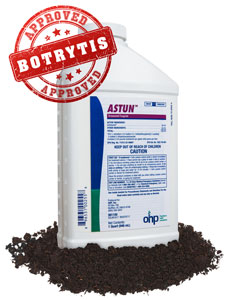 provide rapid control of botrytis spp. on spring crops, including plants in full bloom, with no phytotoxicity potential.
provide rapid control of botrytis spp. on spring crops, including plants in full bloom, with no phytotoxicity potential.
Astun provides preventative, systemic, and curative activity on ornamentals grown in commercial greenhouses and nurseries, including plants in color.
Users should add a spreader sticker of their choice with Astun to reduce the possibility of residue on leaves and flowers. Astun provides fast and outstanding botrytis control with the active ingredient isofetamid, a new fourth-generation member of the SDHI class of chemistry, mode of action (MOA) group 7.
Use rates range from 10-17 fl. oz. per 100 gal. of water.
Astun carries a 12-hour REI and Caution signal word.
OHP also offers a Botrytis Recipe for Success which contains great rotational information for growers.
Paul Pilon joins OHP technical staff
December 7, 2020
OHP, Inc. is proud to announce the addition of industry veteran Paul Pilon as Technical Manager, effective immediately.
 Paul Pilon, Technical Manager with OHP, Inc. “We are pleased to add Paul to our team of dedicated professionals,” says Dan Stahl, OHP vice president and general manager.” He’s a former grower and he brings growing experience, crop expertise, product knowledge, diagnostic ability, research capabilities, communication skills, and other strengths to OHP.”
Paul Pilon, Technical Manager with OHP, Inc. “We are pleased to add Paul to our team of dedicated professionals,” says Dan Stahl, OHP vice president and general manager.” He’s a former grower and he brings growing experience, crop expertise, product knowledge, diagnostic ability, research capabilities, communication skills, and other strengths to OHP.”
Paul is well-known and respected in the horticulture industry, having founded and operated Perennial Solutions Consulting since 2005. His client list included key growers from every region of the U.S. and internationally.
He has written numerous articles for industry trade magazines and has produced Perennial Pulse e-newsletter for Ball Publishing since 2014.
In addition, he has written a bi-monthly column “Paul Talks Perennials” for Grower Talks magazine since 2017. He authored a book on perennial production in 2006.
“As hard as the decision to leave my successful consulting business behind may seem, the choice was somewhat easier than I thought,” he says. “Being an industry leader, OHP has the resources to pursue research and projects I could never attempt on my own and they are committed to developing products growers need.”
With his background in plant growth regulators and herbicides, Paul teams with OHP Senior Technical Manager Dr. Carlos Bográn, who specializes in insecticides and fungicides, to comprise the OHP technical staff.
A frequent speaker at industry events including Cultivate and Far West, Paul began his career as a grower at Neal Mast and Son Greenhouses in Grand Rapids, MI and later served as head grower at Sawyer Nursery in Hudsonville, MI. He holds a bachelor’s degree in horticulture from Michigan State University.
He and his family currently reside in Jenison, MI. Please welcome him to the OHP family.
Let OHP help build your herbicide rotation plan.
September 23, 2020
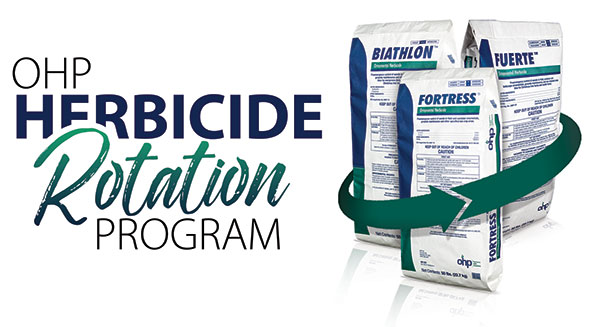
A quality pre-emergent herbicide works to prevent weeds from germinating. Choosing the correct product(s) and using them properly is not so simple. Herbicide performance is a matter of application rate, environmental conditions, watering practices, and frequency of use.
Overuse of a particular herbicide may set the stage for herbicide resistance. Herbicide rotation is critical in getting the most out of a weed control program.
It is important to rotate MOA (Mode of Action) with herbicides just as with insecticides. Rotating MOAs will help prevent the creation of dominant weed species based on its tolerance to particular MOAs.
OHP has developed a wide range of granular herbicides designed to meet different grower needs, seasons, and crops. OHP herbicides are formulated on a uniform and dustless granule. These unique premium formulations increase delivery accuracy, and provide cleaner conditions for applicators and excellent plant tolerance.
For more information on herbicide rotation, weed identification and control, contact your Regional Technical Sales Manager.
